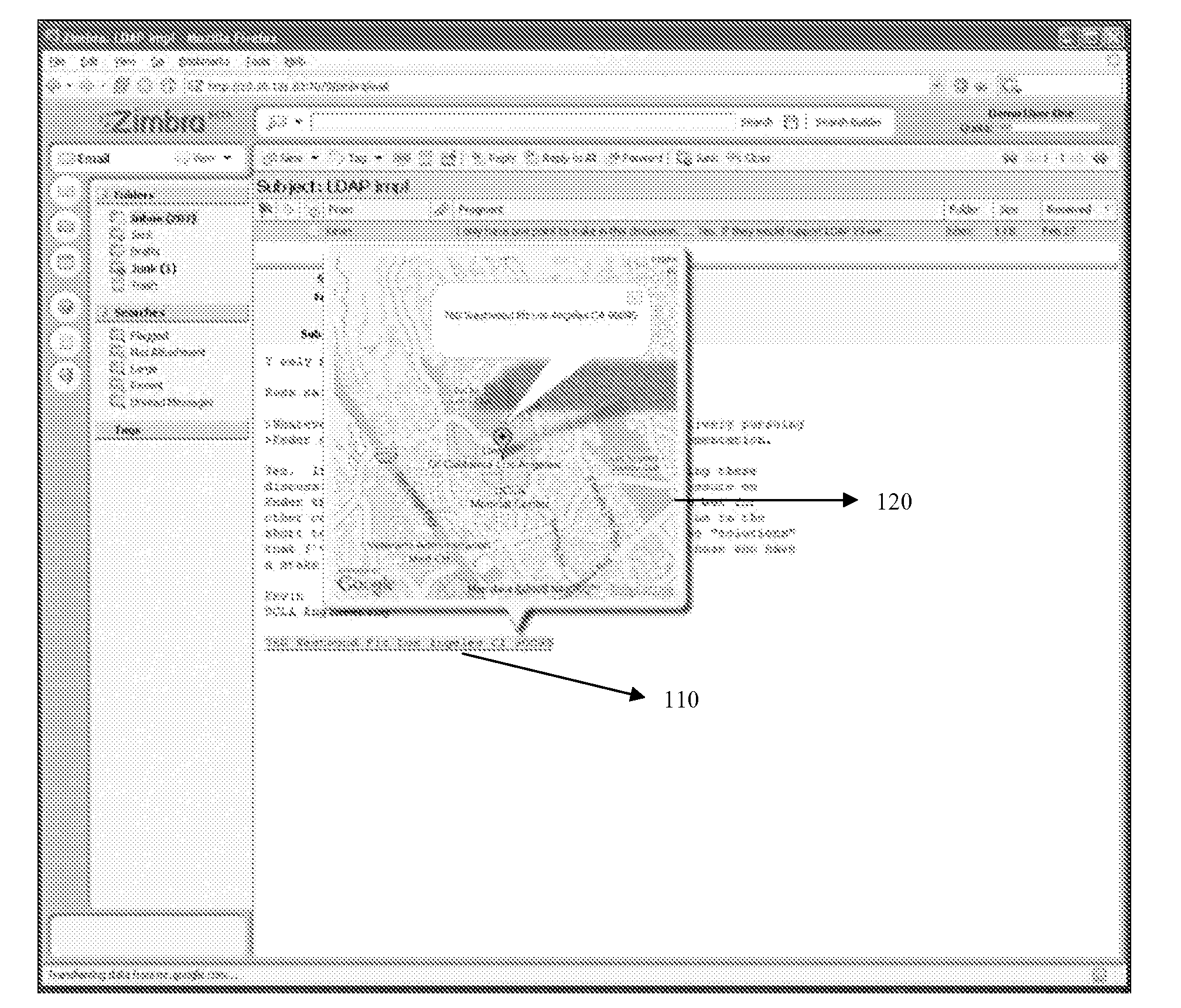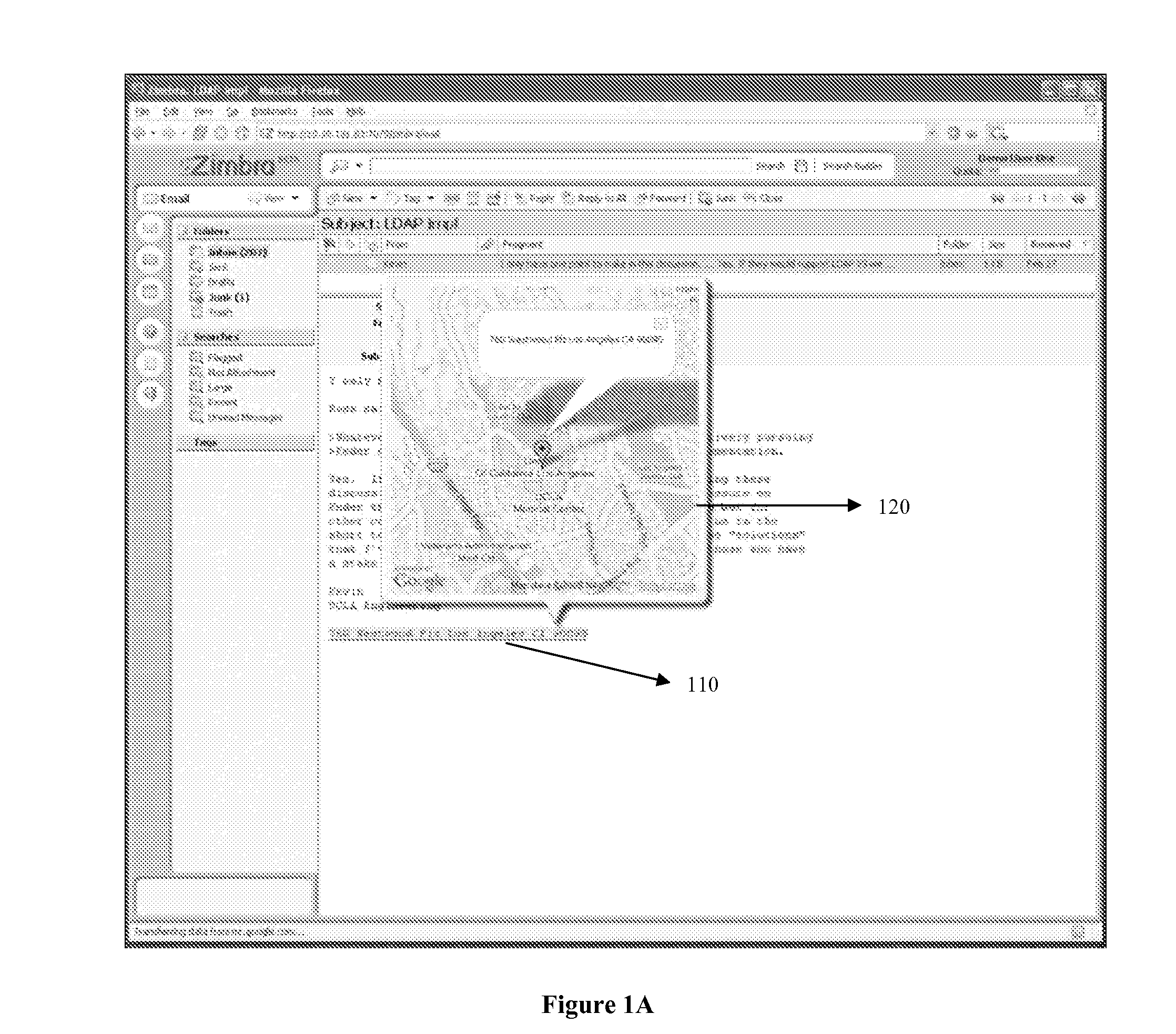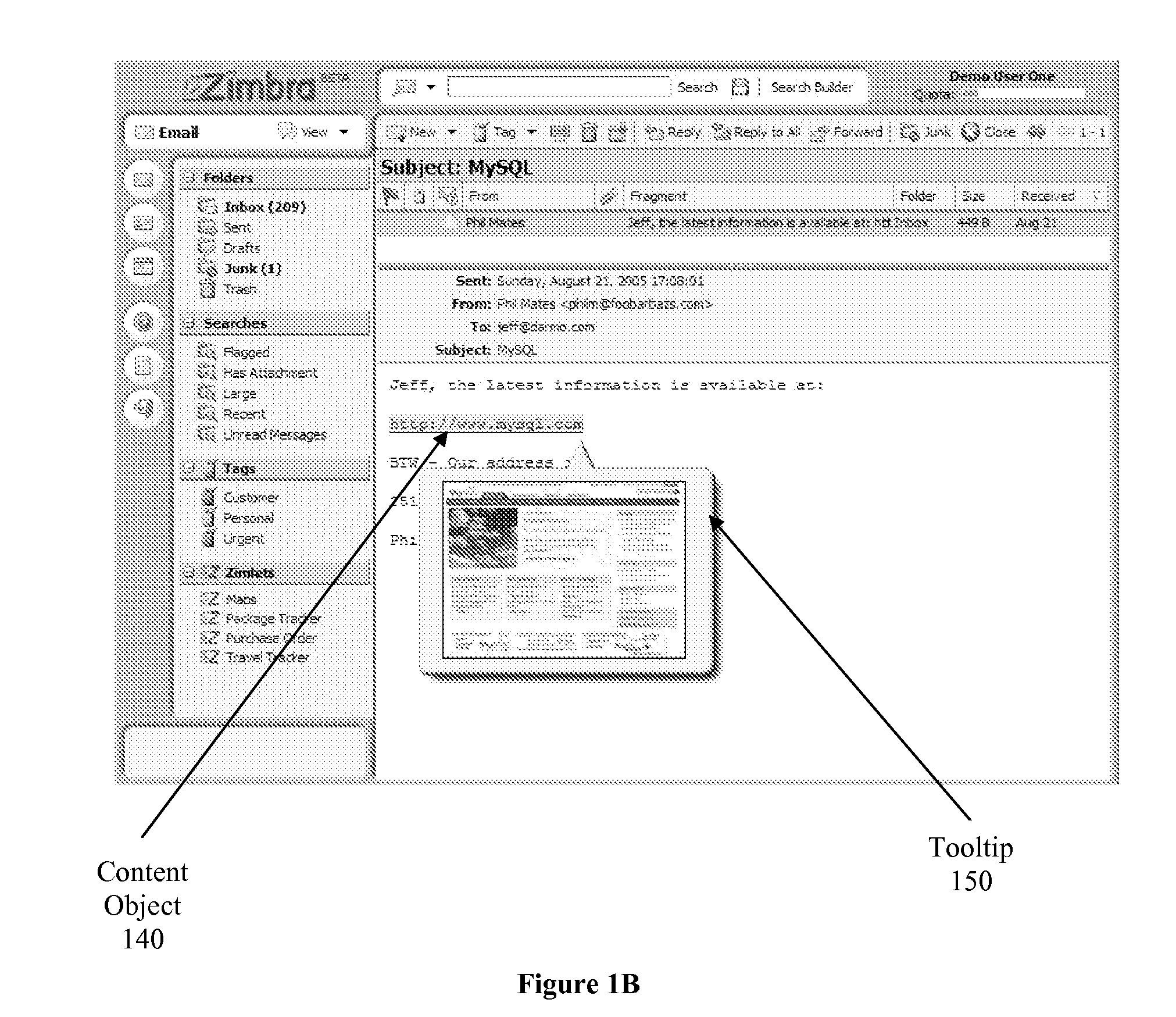System and method for seamlessly integrating separate information systems within an application
a technology of information system and application, applied in the field of integrating various separate information systems seamlessly, can solve the problems of time-consuming, annoying and inconvenient for users, and it is not possible for users to recognize some other content (e.g. p.o. numbers, phone numbers, etc.), and achieve the effect of non-flexible, non-customizable, and non-extensible solutions
- Summary
- Abstract
- Description
- Claims
- Application Information
AI Technical Summary
Benefits of technology
Problems solved by technology
Method used
Image
Examples
Embodiment Construction
[0037]The figures (or drawings) depict a preferred embodiment of the present invention for purposes of illustration only. It is noted that similar or like reference numbers in the figures may indicate similar or like functionality. One of skill in the art will readily recognize from the following discussion that alternative embodiments of the structures and methods disclosed herein may be employed without departing from the principles of the invention(s) herein. It is to be noted that while the following discussion focuses on embodiments of the present invention as applied to a collaboration suite, the invention can be applied to other applications, where a tighter integration between different information systems is desired. Further, each bundle of files that integrates the collaboration client with a separate information system is referred to as a “Zimlet.” This is only a name used for reference, and it has no connection to functionality. Moreover, some examples are described with...
PUM
 Login to View More
Login to View More Abstract
Description
Claims
Application Information
 Login to View More
Login to View More - R&D
- Intellectual Property
- Life Sciences
- Materials
- Tech Scout
- Unparalleled Data Quality
- Higher Quality Content
- 60% Fewer Hallucinations
Browse by: Latest US Patents, China's latest patents, Technical Efficacy Thesaurus, Application Domain, Technology Topic, Popular Technical Reports.
© 2025 PatSnap. All rights reserved.Legal|Privacy policy|Modern Slavery Act Transparency Statement|Sitemap|About US| Contact US: help@patsnap.com



